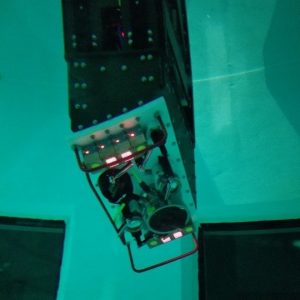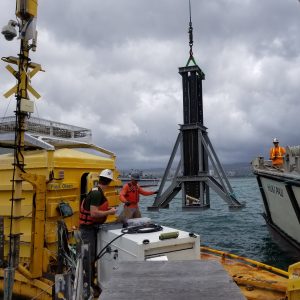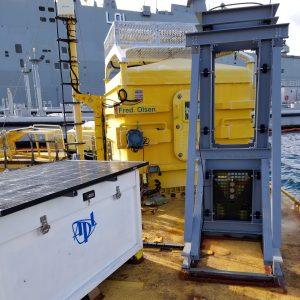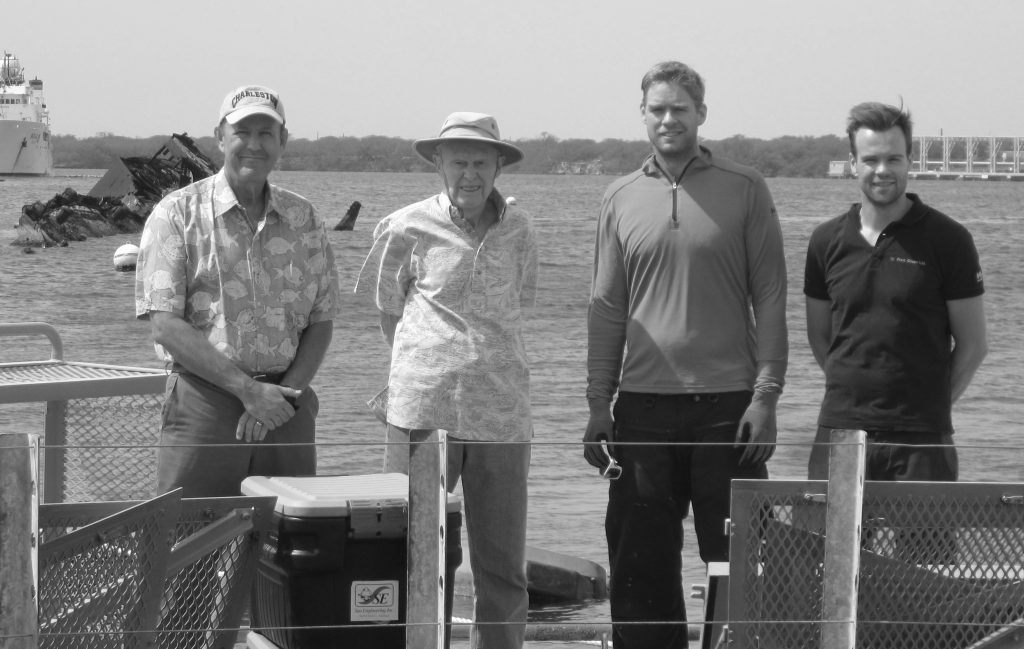BOLT LIFESAVER @ WETS HAWAII 2018
PHP kode her
Power production data from current deployment at US Navy test site
“Using the Lifesaver to power the our Adaptable Monitoring Package (AMP) sensor system has allowed us to gather critical environmental data that could ‘retire’ this environmental risk and demonstrated the transformative potential for waves to power next-generation sensor packages anywhere in the ocean”. Pacific Marine Energy Center
Full article from PMEC here
The U.S. Naval Facilities Engineering Command (NAVFAC) is funding another deployment of the wave energy converter BOLT Lifesaver at the 30m test berth of the Navy’s Wave Energy Test Site (WETS), located offshore of Marine Corps Base Hawaii, near Kaneohe, on Oahu.
A collaborative effort between the Applied Research Lab at University of Hawaii, the Applied Physics Lab at University of Washington, offshore operations company Sea Engineering, Inc., and technology owner Fred. Olsen Ltd., the project has seen BOLT Lifesaver undergo modifications to host an oceanographic sensor package (Adaptable Monitoring Package – AMP), developed by the Pacific Marine Renewable Energy Center, to demonstrate the wave energy converter’s ability to directly power external systems.
The sensor package was designed and fabricated by a team from the UW Applied Physics Lab and the UW Department of Mechanical Engineering, during the spring of 2018, and installed and commissioned on BOLT Lifesaver during July and August.

Tank testing @ UW

Lift and installation Sea Engineering Inc.

Frame and battery/computer case installed
In addition to the AMP’s usual set of sonars and cameras to observe the marine environment, the system includes an underwater data-logging and non-contact power transfer solution, suitable for charging Autonomous Underwater Vehicles, developed by Seattle-based startup, WiBotic.
Engineers with the BOLT Sea Power program at Fred. Olsen Ltd. has implemented a fiber tether product to connect the winch lines to seabed, in an effort to demonstrate simplified deployment processes and enhanced power performance. If this proves successful, it represents a solution for deployment and power production at water depths down to 1000m.
Capability to transfer power through the winch line has also been implemented as part of the upgrade work. A slipring arrangement circulates 6A at 650V (some 4kW) continuously down to 10m below sea surface. If successful, this represents a solution to use the PTO winch line mooring as a means to transfer power and communication down to seabed without the need for an additional umbilical, reducing installation cost and operational risk.
All modifications and upgrades were completed as of September 2018, and BOLT Lifesaver was installed on October 12th 2018. The sea trials will start by 4 weeks of system commissioning where the power take-off winches will be operated at reduced power settings. Once all boxes are ticked, generator settings will be ramped up to nominal levels. Production data and performance indicators will be uploaded to our website every 20 minutes through the whole deployment.

Fred. Olsen himself visiting BOLT Lifesaver during modification work, February 2018. From left: Patrick Cross (Project Manager, UH), Fred. Olsen (owner), Jonas Sjolte (Power Systems Architect), Even Hjetland (Engineering Manager). In background, USS Utah.



